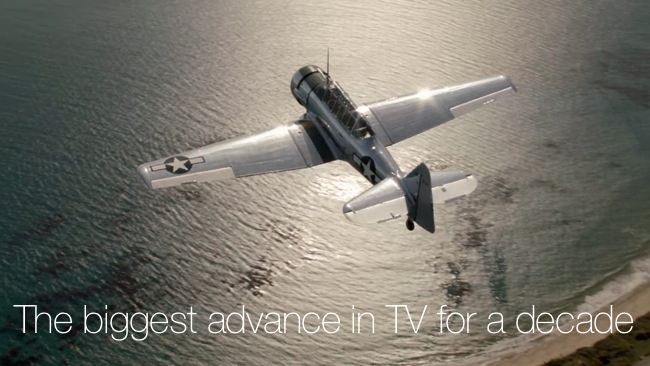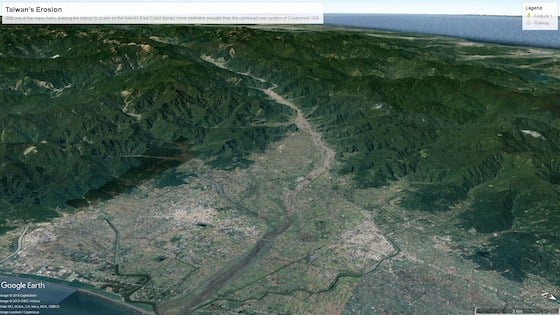
 The Biggest Advance In Television for a Decade
The Biggest Advance In Television for a Decade
Just in case you're not fully up to speed with HDR and its importance, a quick rewind to just after IBC2014 when Dolby first introduced Dolby Vision and a look at some of the underlying principles.
Attached to a wall in a sterile exhibition hall in Amsterdam, we’ve just seen the future of video. That’s a big statement to make, but we genuinely believe it. It’s bigger than 4K and 8K, and very much bigger than 3D. In a way, you could argue that it’s a greater change than the one from film to video.
It’s Dolby Vision, one of the very first examples of High Dynamic Range TV.
Now, “High Dynamic Range TV” may sounds like a rather dry expression for a revolution, but stay with me. It’s a genuinely dramatic increase in the quality of moving images.
The human eye has a remarkably ability to deal with different levels of light. We can see perfectly happily in bright, direct sunlight and in moonlight. Within a scene, we can make out detail in dark areas and at the same time be startled at a glint of sunlight coming off a polished chrome detail on a 1950s Chevy. We can enjoy seeing the light force its way through a back lit leaf or flower, and be entertained by a firework display: intensely bright explosions of light against a velvet-black sky.
Video displays have struggled to keep up with this, so we pre-package our video into “standards” like Rec 709, which is for HD TV transmission and display systems. It does a very good job of making television look rich and vibrant, but that’s only (quite literally) part of the picture, and it’s all relative.
Look at it this way: video is normally delivered to the home (via terrestrial broadcast, satellite, cable, DVD or internet download) in 8 bit format. The number of bits is normally equated to the number of colours that can be reproduced, but, ultimately, it also determines the dynamic range. You can actually reproduce virtually any dynamic range with as many or as few bits as you like, but if you use too few, and you have a large dynamic range, you’ll get unpleasant contours, and the picture will degrade quickly if you apply too many stages of processing to it.
We don't have linear eyes
The problem is worse than it might actually seem because although sensors tend to be roughly linear, the way we perceive light certainly isn’t. Here’s a clip from Phil Rhodes' recent article on Log Cinema modes to explain:
The human eye responds to light more or less linearly as the real light intensity doubles. This is familiar to photographers as an exposure value, where increasing an exposure value by one always looks like the same amount of additional brightness, even though every increase in visible brightness actually represents a doubling of light intensity. If we view a scene with a single 100W light aiming at it, we could call light 100. Let's assume the scene is comfortably exposed in these circumstances, so we can call it brightness 1. To double the amount of light, we might add another 100W light, so light is 200 and brightness is 2, which is fairly intuitive. But to increase the apparent brightness by the same amount again, so that brightness is 3, we need to double the amount of light again, so that light is 400. This is of course not new; when the system of f stops and exposure value was developed, we knew that linear apparent brightness increase requires successive doubling of the amount of light.
Digital cameras are approaching the point where they can emulate the sensitivity and the dynamic range of the human eye, with as many as 14 stops available between black and white. Since each stop represents a doubling of light, that’s a very wide range indeed.
But none of this solves the problem of displays that can’t handle such a range of brightness. To be able to display this huge dynamic range calls for new technology. And there’s good news on this, as you’ll read later in the article.
But first I want to clear up one possible point of confusion.
This is not just "HDR" photography
HDR photography has been around for some time. But this is different to what we’re talking about here. In HDR photography, multiple shots at different exposures are combined to create an image that shows detail in the whole brightness range, from shimmering highlights to gloomy shadows. But here’s the thing - this enormous range is compressed to fit into the capabilities of either a display or a printed page. The results can certainly look spectacular, but they often look unreal - like a computer game. That’s because we’re not seeing a real dynamic range but merely the details that are revealed in a very wide range of light, reproduced on a display that has only a “normal” dynamic range.
To see what the real world (ie real objects in realistic levels of light seen by real eyes) looks like, we need displays that can match the dynamic range of our eyes and, in latter times, our cameras.
And that’s a problem, because, lovely though flat screens are, they aren’t even as good, in some respects, as the Cathode Ray Tubes that preceded them.
But they have got much better over time. Properly set up, and with good, contrasty material, the results can appear very good indeed. And, yes, 4K has made them even better, even if it’s done little to improve dynamic range.
To match real-world images, displays need to have deeper blacks, and much, much brighter whites. The improvement needed is actually quite brutal: they need to be 1000 times better.
Put like that, it might seem like an unattainable goal, but remarkably, we’re just seeing the first examples of genuine HDR displays, such as the one from Dolby, called Dolby Vision, that we saw in Amsterdam the other day.
Dolby’s a clever company. Rather than relying on manufacturing and selling their products, they’ve preferred to spend money on research and development, and to gain their income through licensing.
So what’s attracted them to video? Probably that the question of High Dynamic Range TV is essentially a restatement of the problem that turned them into a successful business in the first place: improving the dynamic range of audio tape. From the mid ‘60s onwards, when cassette tape was popular, the biggest limitation was hiss. The slow speed of the tape and the narrowness of the format meant that it was very prone to noise. By introducing frequency selective recording and playback, Dolby was able to improve the performance of the medium drastically.
Fast forward to today and that’s exactly what Dolby’s trying to do with television: make a way to watch images that are truer to real life because they have a high dynamic range.
Below is a chart showing the vast range of brightnesses found in real life

How does it work?
So, how does it work? First of all, there are already cameras out there that can capture images with enough dynamic range. We were shown a sample of “Oblivion” shot on a Sony F65 - a camera whose raw output has a dynamic range as high as 14 stops. The footage had been re-graded to take account of the characteristics of the display it was destined for, which was a Dolby HDR one.
An HDR monitor has better black levels, but the primary difference is selective backlighting, where thousands of LEDs behind the LCD panel can be individually turned on to provide extremely bright backlighting exactly corresponding to the highlights in the image. All of this is only at the prototype stage but Dolby assured us that they’re working with several partners well known in the industry.
What does it look like?
It looks like nothing you’ve ever seen on the TV before. Very dark blacks. Extremely bright highlights. And all the details in between, with nothing stretched or distorted. Just a great-looking picture.
The images looked saturated and vivid, but naturally so, and the pictures came alive when the sun was behind objects, or when it was glinting off metal or water.
It’s hard to describe the difference. It’s one of those things you really have to see. We were lucky enough to view this alongside the same material but on a conventional monitor. The older set looked like it was extremely low contrast and rather washed out.
Seeing HDR video is a visceral experience. Imagine opening the curtains on a sunny day. As the first shaft of light floods in, you blink and screw your eyes up. That’s the sort of force that HDR TV has.
And without this, you don’t see real life at all. What you see instead is a dull and lifeless facsimile of it. HDR television is the closest we’ve ever seen to real life on television.
How important is it? It’s the most exciting thing we’ve seen in ten years. That means it’s more important than 4K and even 8K, because both of those resolution-rich formats are just more of the same: essentially the same tech with more pixels. Just to be clear: HDR with either either 4K or 8K would be even better, but, based on what we’ve seen, we’d rather watch a feature film in HDR HD than in Standard Dynamic Range in 4K.
It really is that good!
Tags: Technology



Comments